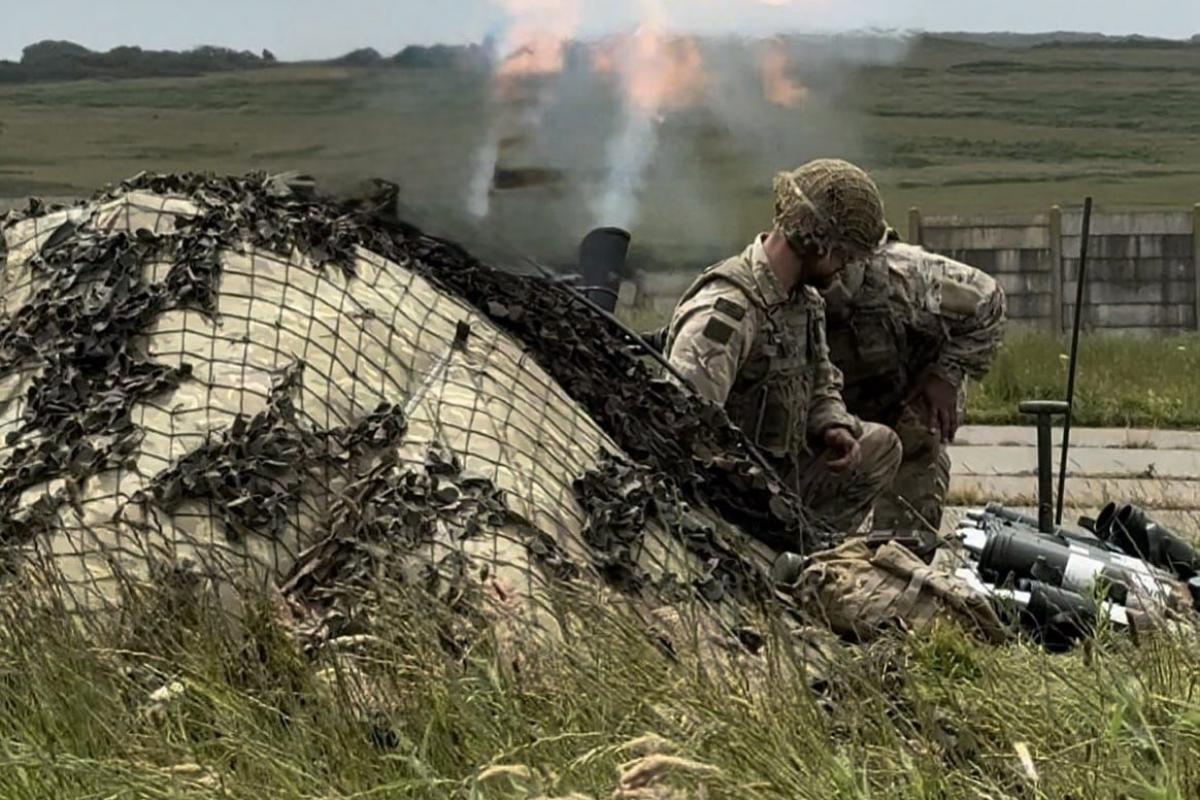MERCIANS JOIN VICTORY PARADE
The British-led NATO Multinational Battlegroup joined Estonians in commemorating Victory Day with a parade in the southwestern city of Pärnu.
British troops from C Company, 1st Battalion The Mercian Regiment, and French soldiers marched alongside Estonian units in a show of unity and commitment to regional security.
The annual parade is one of Estonia’s most significant national events, marking the 1919 victory at the Battle of Võnnu during the War of Independence.
This year’s celebrations were led by the Estonian Defence League and included a formal inspection of troops by President Alar Karis.
Military vehicles and equipment were showcased in a static display, allowing the public to engage directly with soldiers and better understand the capabilities of Estonia’s Defence Forces and their NATO Allies.
TRAINING IN WALES
For the past two weeks, First Fusiliers Mortar Platoon has been embedded with the 1 Royal Tank Regiment Battlegroup at Castlemartin.
Working closely with 127 Battery, from 19 Regiment RA, the team has coordinated joint fires, engaging targets in complex live-fire scenarios.
Castlemartin provides the UK’s only coastal live-fire range of its size (6,000 acres), enabling both mounted and dismounted operations across land and littoral zones.
This precision-led mission sharpens battlefield lethality and reinforces trust between infantry and artillery—a cornerstone of modern combined arms warfare.
Whilst down at Castlemartin Ranges, soldiers and officers of EGYPT Squadron, RTR took part in a beach clean-up of one of the local beaches.
After a busy day of tidying up, the Squadron then came back to camp to enjoy a well-earned BBQ, delivered by their highly talented military chefs led by Sergeant Shepherdson, marking the end of a busy period of live firing before they transition to the CALFEX phase of their training for Estonia.
CYPRUS LESSONS
Despite scorching temperatures in Cyprus, members of Delta Company 1 Royal Welsh conducted a battlefield study of the airport near the Cypriot city of Nicosia.
Nicosia International Airport, formerly RAF Nicosia (1930s-1960s); once Cyprus’s main hub, became a symbol of division after the 1974 Cyprus conflict.
When the island was split in two, the airport was abandoned and is now part of the UN Buffer Zone.
Still in disrepair, it remains closed to flights and serves as a poignant reminder of Cyprus’s ongoing political split.
